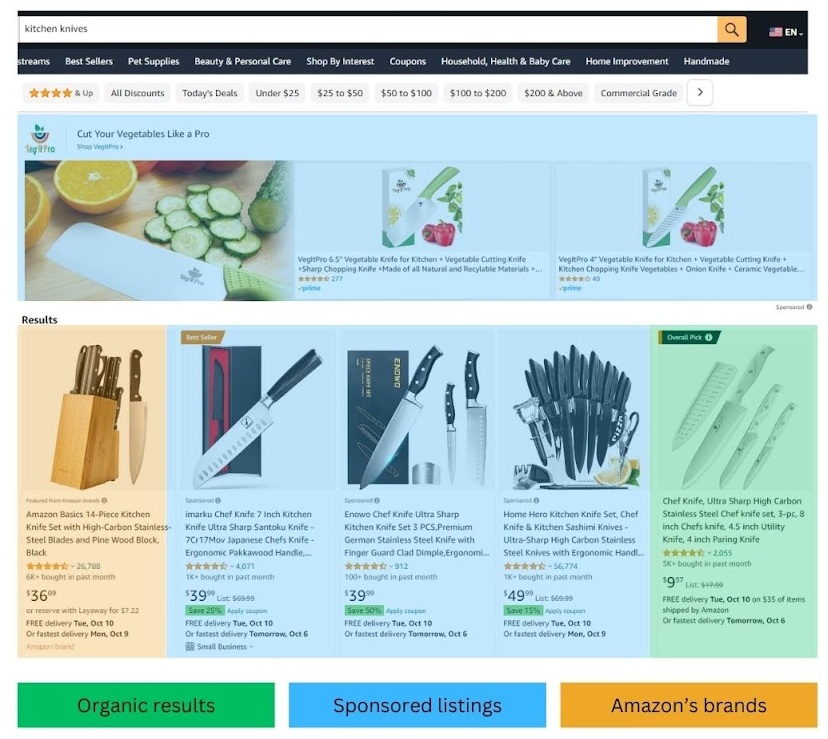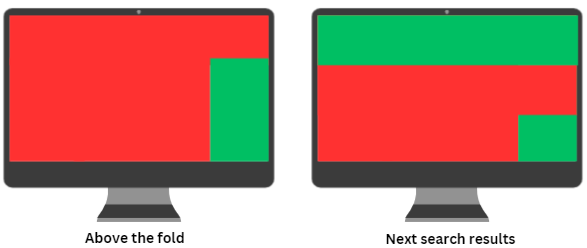Some people remember their first kiss, others their first time flying, I remember my first Amazon order. It was almost a decade ago, I had just moved to Philadelphia as an exchange student. I remember finding the stupidly expensive textbook I needed for a class on Amazon at 20% of the university bookstore price. This is when my journey with Amazon began. Back then, Amazon US already offered a huge selection of products, compared to European marketplaces. I was fascinated by how easy it was to find unique products and great deals. And let me tell you, things have changed. Sometimes, I’d like to go back in time and analyze the 2014 Amazon to compare it to the current version. As we will see in this article, there were many changes regarding the product search process. Changes so radical the FTC now has an eye on it.
While reviewing the recent FTC lawsuit against Amazon, we analyzed the tactics Amazon allegedly uses to ensure third-party sellers don’t offer the same items on other online channels at a lower price. Amazon was accused of contributing to higher prices online, in part because of its Buybox attribution algorithm.
Today, we’ll discuss the allegations that Amazon shows favoritism towards its proprietary brands, and makes shopping confusing for customers by bloating search results with sponsored listings. This also impacts sellers bottom line, as they have to heavily invest on advertising if they want to drive sales
Is Amazon Mostly Ads? A Little Experiment on the User Experience
Aside from my experience selling on Amazon, I often use the platform to shop. My local Amazon drivers are probably tired of stopping by my apartment, but it is just so convenient for many products. Just like the 57% of US consumers who start their online shopping searches on Amazon, I use the marketplace to discover new products. Over the years, I found that the shopping experience became vastly different. The first page of results used to be full of the popular name brand items, with the occasional ad for lesser known products (sponsored listing). Now, over 50% of the search results are ads, including sponsored products, sponsored brands, and various new ad formats that Amazon continually introduces. I wanted to do a little experiment, and search for “Kitchen knives”.

Searching for “Kitchen knives” gets us a sponsored brand ad at the top of the page, followed by an “Amazon basics” listing (we’ll get to that later), and finally an organic listing. That is only one organic result above the fold! (Above the fold is the part of the webpage visible without scrolling). Let’s scroll down a little to see what happens.

As you can see, there is a row of organic results, followed by a row of ads, one Amazon item, more ads, and finally organic results again. In other words, the amount of organic, non-Amazon results is quite limited.

How This Impacts the Customer Experience
This situation will have an impact on the customer experience. The multiplication of ads might make it more difficult for customers to find the product they need. For example, if they have a specific brand in mind, they may have to scroll longer to find it (especially on mobile, where screen space is more limited).
Furthermore, it becomes more difficult to discover the most relevant products and the best sellers. While almost two-thirds of U.S. (65%) adults say they are purchasing more generic and store brands to save money, many customers are still attached to name brand names, and want to find them easily. It is also possible that a significant proportion of customers don’t know the difference between organic and sponsored products, leading them to make uninformed purchase decisions.
On the flip side, advertising allows customers to find out about products they would never come across if they only saw the best sellers every time. I have personally bought advertised, off-brand products in the past, and had mostly positive experiences. Balance is the key, and an optimal customer experience should display only the right proportion of ads. I am certain that Amazon strives to offer their customers a pleasant shopping experience, but I know that they also don’t want to miss out on ads revenues: Recent reports suggest that their ads revenues may hit $10B in 2023, and it is clear that these are a key piece of Amazon’s strategy.
Consequences for Sellers
The primary consequence for sellers is of course increased advertising costs. If the marketplace shifts towards a pay-to-win model for sellers, they have to spend extra on advertising to gain visibility and generate sales. This is especially true for new sellers and new brands that lack reviews and have poor organic rankings. Combined with the ever increasing costs per click, it makes it difficult for new listings to compete with established offers.
Sellers may consider increasing their prices, to secure more advertising budget. However, this approach not only disadvantages customers but also exposes sellers to price competition from rivals. And as we have seen in my previous article, Amazon punishes sellers that don’t have the lowest prices across all online channels.
This is a truly challenging situation for sellers, who need to spend more on advertising and more year after year, while facing increases in various Amazon’s fees, and potential price increases from their suppliers.
Does Amazon Give its Own Brands Preferential Treatment?
While this is a controversial subject, Amazon is constantly criticized for prioritizing its own private-label products in search results. Amazon had been accused in the past of using its third party sellers data to develop its own range of products, copying existing products. Doing so would be considered unfair competition. It would give customers the idea that the product is more attractive than it really is. This would also reduce the space for organic results, and encourage other sellers to spend even more on advertising to gain visibility in the search results.
It is worth noting that the ecommerce giant plans on cutting 27 of its 30 private-label clothing brands, mentioning cutting costs, and due to the current antitrust lawsuit.
Conclusion
Do I think the game is rigged? Yes and no. I believe that dedicating more than half of the search results to sponsored ads makes a worse shopping experience. However, with the new listings appearing everyday on the marketplace, there is a need for some advertising space on the website. The platform and the search results algorithm should of course show the product the customers need, but I believe they should also display new, innovative products that could be tomorrow’s best sellers. Maybe the solution would be a stricter selection of who can sell on the marketplaces, and what products are not needed. It is a complex issue, and Amazon seems to be taking the lawsuit seriously if they are cutting some of their private-labeled brands. Let’s hope to see positive changes in the future, so both customers and buyers can enjoy the best possible shopping experience.
